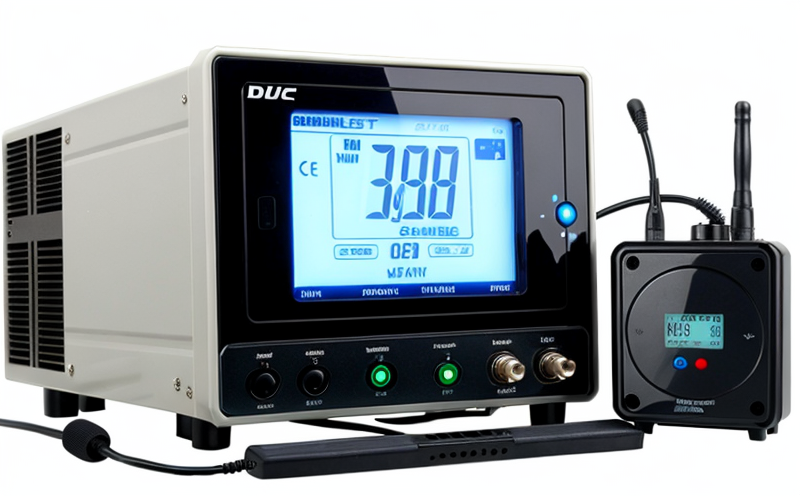UL 62368 Wireless Device Safety and RF Testing
The UL 62368-1 standard is a comprehensive safety guideline that addresses the electrical safety of consumer electronics, including wireless devices. It integrates various existing standards to provide a single set of requirements for product safety testing. This standard covers a wide range of products such as smartphones, tablets, smartwatches, and other connected devices.
The UL 62368 Wireless Device Safety and RF Testing is essential in the electronics sector because it ensures that wireless devices are safe from electrical hazards. The test evaluates critical aspects like insulation integrity, overvoltage protection, overheating prevention, and more. This testing process helps manufacturers comply with international safety regulations, ensuring their products meet consumer expectations for reliability and safety.
The UL 62368 standard is particularly important in the wireless communication category as it addresses risks associated with high-frequency signals that can potentially cause harm to users or damage to equipment. By adhering to this standard during product development, companies can mitigate these risks effectively. Additionally, compliance helps reduce legal liabilities and enhances brand reputation.
The testing procedure involves several steps to assess different parameters of the device under test (DUT). These include insulation resistance measurement, voltage stress evaluation, power dissipation analysis, and more. Each step aims at identifying potential hazards early in the design phase, allowing for timely corrections before mass production begins.
One key aspect of this testing is ensuring that all connections within the wireless device are properly insulated against accidental contact with live parts. This prevents electrical shock risks which could arise due to improper connection practices during manufacturing or use by consumers. Another focus area is verifying the effectiveness of overvoltage protection mechanisms incorporated into modern electronic devices.
For RF communication testing specifically, compliance with UL 62368 ensures that wireless signals do not interfere with other nearby electronics or emit excessive radiation levels harmful to human health. This involves measuring emitted electromagnetic fields (EMFs) at various distances from the device and comparing them against specified limits outlined in this standard.
The results of these tests are crucial for demonstrating compliance with relevant international standards such as IEC 62368-1, which is widely recognized across different countries. Compliance helps manufacturers avoid costly recalls or product withdrawals after they have already entered the market.
In summary, UL 62368 Wireless Device Safety and RF Testing provides a robust framework for ensuring consumer electronics are safe from electrical hazards while also protecting users from potential risks associated with high-frequency signals used in wireless communications. By adhering to this standard during product development stages, companies can enhance their products' safety profile, meet regulatory requirements more efficiently, and build trust among consumers.
Benefits
- Enhanced Safety: Ensures that wireless devices comply with stringent electrical safety standards reducing the risk of accidents or injuries.
- Regulatory Compliance: Helps manufacturers meet international regulations such as IEC 62368-1, ensuring smooth market entry in various regions.
- Improved Product Quality: Identifies potential issues early on through thorough testing which leads to better product designs and performance.
- Better Consumer Trust: Demonstrates a commitment to safety and quality enhancing brand image among consumers who value these attributes highly.
The UL 62368 Wireless Device Safety and RF Testing not only safeguards end-users but also protects the manufacturers from legal actions related to product liability. It fosters an environment where innovation can thrive without compromising on user safety, thus promoting sustainable growth within the electronics industry.
Why Choose This Test
- Comprehensive Coverage: UL 62368-1 provides a single set of requirements covering multiple aspects of electrical safety for consumer electronics including wireless devices.
- International Recognition: Widely accepted across different countries, ensuring your product can easily enter international markets without additional modifications required.
- Prompter Market Access: By meeting these standards early in the design process, you avoid delays caused by non-compliance later down the line.
- Safety Assurance: The rigorous testing procedures ensure that your products are safe from electrical hazards protecting both consumers and manufacturers alike.
The UL 62368 Wireless Device Safety and RF Testing is a crucial step in product development that guarantees safety standards are met before mass production begins. This reduces the risk of costly recalls or withdrawals after entering the market, thereby saving time and resources for your business.
Quality and Reliability Assurance
- Inspection Criteria: Adherence to UL 62368 ensures that all components of a wireless device are inspected meticulously ensuring they meet the specified standards.
- Testing Protocols: A series of tests are conducted on the DUT to evaluate its electrical safety, ensuring it can withstand various environmental conditions without failing.
The UL 62368 Wireless Device Safety and RF Testing process includes detailed inspection criteria that cover every aspect of the device's construction. This ensures no detail goes unnoticed during evaluation. Additionally, testing protocols are designed to simulate real-world usage scenarios providing insights into how well your product performs under different circumstances.
The rigorous nature of these tests guarantees high-quality output from manufacturers who follow this standard closely. It also helps establish a reliable reputation for the brand among consumers who value safety and reliability above all else.





